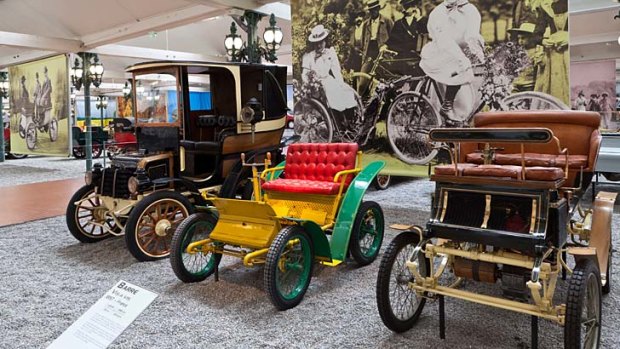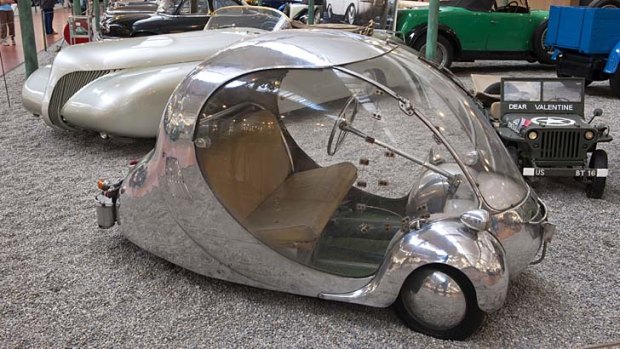
Cars from the Collection Schlumpf.Credit: Alamy
Lee Atkinson takes a walk through the world's biggest underground garage in Alsace.
How many cars does a rich man need? Four hundred or so if you are a French textile tycoon, it seems.
Fritz Schlumpf and his brother owned a woollen mill in the industrial city of Mulhouse at the southern end of Alsace in the 1950s and was crazy about cars, especially Bugattis.

Creative sparks: Electric egg car, from 1942.Credit: Corbis
But like many grand obsessions, it was a secret passion and in the 1960s Fritz began buying cars on the sly, hiding his fast-growing collection in an underground section of the factory warehouse, spending more than $US12 million in 10 years.
Fast forward a few more years; the factory goes broke, the secret stash of cars is discovered by striking workers and the two brothers flee the country. To cut a long story short, the state seizes the collection of priceless vehicles and the National Museum of the Automobile - Cite de l'Automobile - is born.
It's one of the largest car museums in the world and there are 400 historical cars on show in the former mill, including one of the world's largest collections of Bugattis (more than 120, including the famous Bugatti Royale) and classic racing cars.
But you don't need to be a car buff to enjoy Cite de l'Automobile. Even though it's a car museum, it feels more like an art gallery. The entrance, which you reach by a footbridge over a canal, is a vast atrium, with dozens of suspended sports cars bursting through the glass wall like a frozen airborne grand prix race.
The cars, which are all parked in rows in a massive underground room lit by 800 lamps identical to those that line the Pont Alexandre III bridge in Paris (another Schlumpf extravagance), are mainly European and show the evolution of the motor car from 1878.
And while the interpretation boards and the free audio guide have plenty of details and specifications for car enthusiasts, there's also lots of fascinating trivia included as well, like the history of the humble windscreen wiper, which was originally manual and meant that you had to drive one-handed in the rain, or that, in the beginning, most cars were right-hand drive because it was easier for the driver (back then if you were rich enough to have a car, you were rich enough to have a chauffeur) to get out and open the door for passengers.
There are driving simulators, cars that flip (with you inside), car robots in action and a race track for kids. I loved the collection of beautiful stylised radiator cap mascots; my partner was mesmerised by the audio gallery that featured nothing but recordings of revving engines. But it's the art in the styling of the car that really shines through, and if you've never thought the curves, chrome and grills of cars were sexy, you will be the time you leave.
And of course, this being France, there's an excellent restaurant.
TRIP NOTES
GETTING THERE
Mulhouse is 537 kilometres south-east of Paris and 118 kilometres south of Strasbourg. Qantas flies to Paris via Dubai. See qantas.com.au.
MORE INFORMATION
Cite de l'Automobile is at 15 Rue de l'Epee and is open daily, 10am-5pm. Entry fee is €11.50 ($17) for adults, €9 for children. Restaurant is closed Monday and Tuesday.
MORE INFORMATION
Sign up for the Traveller Deals newsletter
Get exclusive travel deals delivered straight to your inbox. Sign up now.